The Cawthorne-Cooksey exercises are a set of habituation exercises designed to help individuals with vestibular disorders reduce dizziness and improve balance․ The exercises aim to train the brain to adapt to abnormal balance signals‚ enhancing tolerance and restoring function․ They are typically outlined in a PDF guide‚ providing a structured program for gradual progression and self-management of symptoms․ By focusing on eye movements‚ head maneuvers‚ and balance tasks‚ these exercises empower patients to regain stability and confidence in daily activities․ Regular practice is key to achieving optimal results and long-term relief from vestibular challenges․
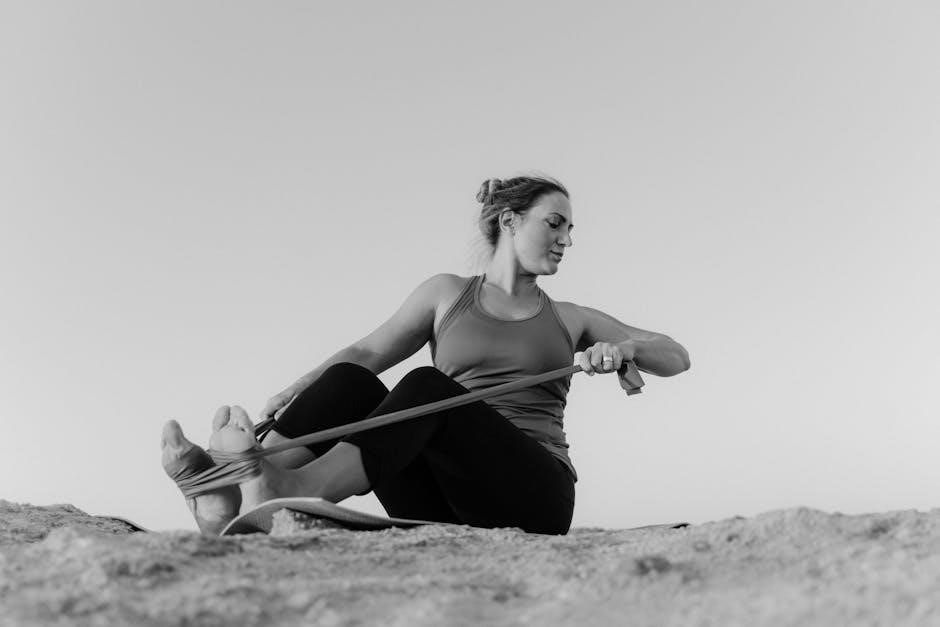
History and Development
The Cawthorne-Cooksey exercises were first developed in the 1940s by British otologist Sir Terence Cawthorne and neurologist Dr․ H․ A․ Cooksey․ Their work focused on addressing vestibular disorders and balance issues in patients‚ particularly following head injuries or inner ear conditions; The exercises were designed as a structured program to help patients gradually adapt to and overcome dizziness and imbalance․ Initially introduced as a series of simple‚ progressive tasks‚ the exercises emphasized habituation and balance retraining․ Over time‚ the program evolved to include detailed guidelines and stages‚ making it accessible for both clinicians and patients․ The development of the Cawthorne-Cooksey exercises marked a significant advancement in vestibular rehabilitation‚ offering a patient-centered approach to managing symptoms․ Today‚ the exercises remain a cornerstone of vestibular rehabilitation‚ widely used and respected for their effectiveness․ The exercises are now available in a PDF format‚ ensuring easy access and standardized practice․
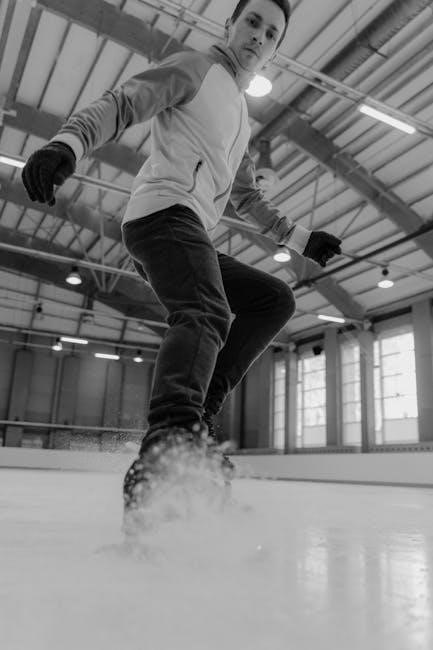
Benefits and Importance
The Cawthorne-Cooksey exercises offer numerous benefits for individuals with vestibular disorders‚ primarily reducing dizziness and improving balance․ By targeting the brain’s ability to adapt to abnormal signals‚ these exercises enhance overall vestibular function and coordination․ They are non-invasive‚ cost-effective‚ and can be performed at home‚ making them accessible to a wide range of patients․ The exercises empower individuals to manage their symptoms independently‚ reducing reliance on medication or intensive medical interventions․ Over time‚ consistent practice leads to improved stability‚ reduced falls‚ and enhanced quality of life․ Additionally‚ the exercises address related issues such as tension in the neck and shoulders‚ promoting overall physical and mental well-being․ Their structured progression ensures gradual adaptation‚ minimizing discomfort and maximizing long-term benefits․ As a result‚ the Cawthorne-Cooksey exercises are a cornerstone of vestibular rehabilitation‚ providing sustainable relief and improving daily functioning for many patients․
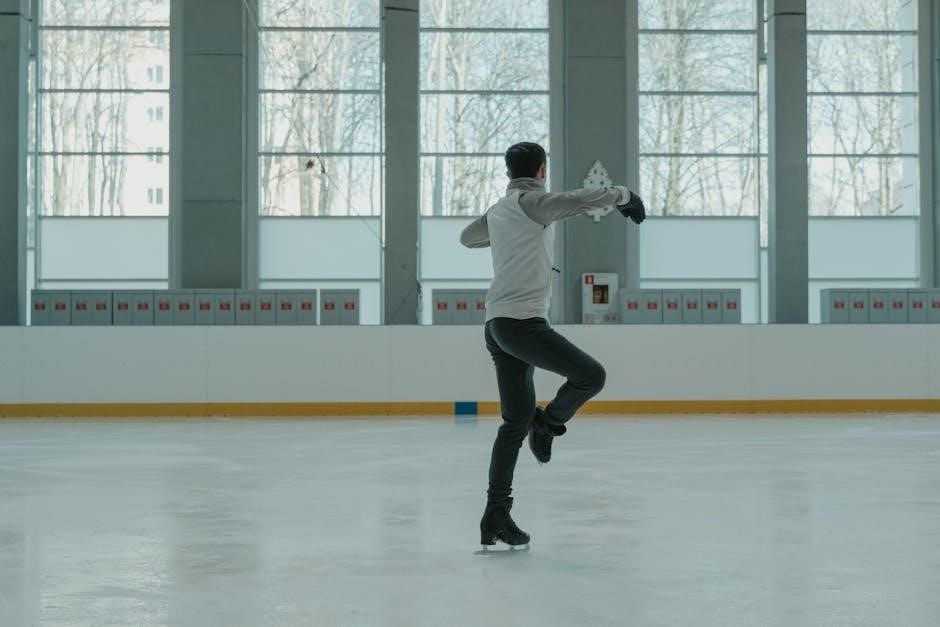
How the Exercises Work
The Cawthorne-Cooksey exercises work by gradually training the brain to adapt to abnormal balance signals through habituation‚ using specific eye‚ head‚ and body movements to reduce dizziness and improve stability․
Scientific Basis
The Cawthorne-Cooksey exercises are grounded in the principles of neuroplasticity and vestibular rehabilitation․ They aim to enhance the brain’s ability to adapt and compensate for inner ear disorders by repeatedly exposing it to controlled stimuli․ The exercises target the vestibular system‚ which regulates balance‚ and rely on habituation‚ a process where the brain learns to ignore unnecessary signals․ By systematically challenging the brain with specific movements‚ the exercises promote long-term neural adaptation․ Studies have shown that consistent practice can lead to significant improvements in balance and a reduction in dizziness․ The scientific basis is supported by research in neurophysiology and vestibular rehabilitation‚ making these exercises a well-established treatment option for individuals with balance disorders․
Role of Habituation
Habituation plays a central role in the Cawthorne-Cooksey exercises by helping the brain adapt to repeated stimuli‚ reducing dizziness over time․ This process involves the brain learning to ignore unnecessary signals from the vestibular system‚ which can become overactive due to inner ear issues․ Through controlled and gradual exposure to specific movements‚ the exercises encourage the brain to develop a tolerance mechanism․ As patients perform these exercises regularly‚ their nervous system becomes less responsive to provoking factors‚ leading to improved balance and reduced symptoms․ Habituation is a key principle that underpins the effectiveness of these exercises‚ making them a cornerstone of vestibular rehabilitation․ By leveraging this natural learning process‚ the Cawthorne-Cooksey exercises offer a non-invasive and sustainable approach to managing balance disorders and enhancing overall vestibular function․

What’s in the Cawthorne-Cooksey Exercises PDF
The Cawthorne-Cooksey Exercises PDF provides a comprehensive guide to managing vestibular disorders․ It includes a structured 20-week program with detailed exercises‚ instructions‚ and progression plans to reduce dizziness and improve balance effectively․
Structure and Content
The Cawthorne-Cooksey Exercises PDF is organized into a clear‚ 20-week structured program․ It begins with simple exercises like eye movements and head rotations‚ gradually increasing in difficulty․ Each section focuses on specific skills‚ such as balance retraining and habituation․ Detailed instructions guide patients through proper techniques‚ while illustrations provide visual clarity․ The PDF also includes progression plans‚ allowing individuals to advance at their own pace․ Additionally‚ it covers relaxation techniques to reduce tension and improve overall well-being․ The content is designed for self-management‚ enabling patients to perform exercises independently․ Regular practice is emphasized to achieve optimal outcomes․ This comprehensive guide ensures a holistic approach to vestibular rehabilitation‚ addressing both physical and mental aspects of balance disorders․
Features of the PDF
The Cawthorne-Cooksey Exercises PDF is a comprehensive and well-organized resource designed to guide patients through vestibular rehabilitation․ It features a clear structure with detailed instructions for each exercise‚ accompanied by images and diagrams to ensure proper form and technique․ The document includes a 20-week progression plan‚ allowing users to gradually increase difficulty as their tolerance improves․ Additionally‚ the PDF incorporates relaxation techniques to help manage stress and discomfort during the exercises․ It is easily accessible on various devices‚ making it convenient for home use․ The content is written in simple‚ understandable language‚ catering to both patients and healthcare professionals․ Overall‚ the PDF serves as an essential tool for individuals seeking to improve their balance and reduce dizziness through structured‚ self-managed exercises․ Its user-friendly design and comprehensive guidance make it a valuable resource for vestibular rehabilitation․
Step-by-Step Implementation Guide
The guide outlines a structured plan‚ starting with basic exercises and progressing to more challenging ones‚ ensuring gradual adaptation and improved balance․ Follow the sequence carefully for optimal results․
Starting the Exercises
Begin by consulting a healthcare professional to ensure the exercises are suitable for your condition․ Start with simple eye movements and gentle head exercises‚ avoiding movements that worsen symptoms․ Focus on slow‚ controlled actions to allow your brain to adapt gradually․ Perform exercises in a safe environment‚ free from distractions‚ and avoid overexertion․ Begin with short sessions‚ such as 5-10 minutes‚ and gradually increase duration as tolerance improves․ Prioritize proper posture and breathing to enhance balance and comfort․ Keep a journal to track progress and identify challenging areas․ Consistency is key; aim to practice daily to achieve noticeable improvements in balance and reduced dizziness over time․
Progressing Through Levels
Progression through the Cawthorne-Cooksey exercises should be gradual and tailored to individual tolerance․ As symptoms improve‚ increase the difficulty by introducing more dynamic movements or reducing support․ Start with simple eye exercises and mild head movements‚ then advance to more complex tasks like balancing on uneven surfaces․ Each level should be mastered before progressing to avoid overwhelming the system․ Listen to your body and only move forward when comfortable․ Avoid rushing through levels‚ as this may prolong recovery․ If dizziness persists or worsens‚ consult a healthcare professional for adjustments․ Consistency and patience are key to achieving long-term benefits and restoring vestibular function effectively․
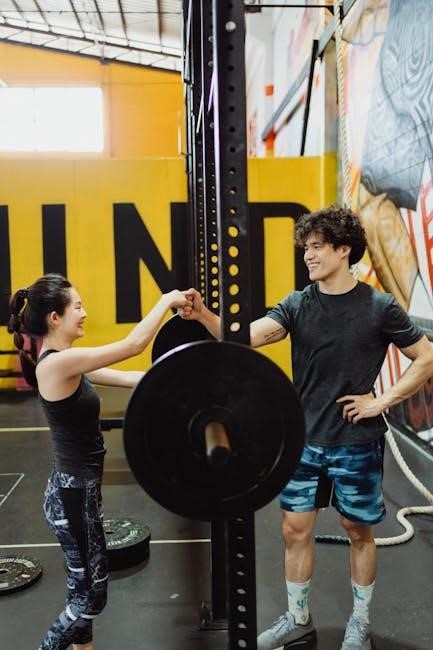
Effectiveness and Success Rates
The Cawthorne-Cooksey exercises have demonstrated significant effectiveness in reducing dizziness and improving balance for individuals with vestibular disorders․ Studies show that consistent practice leads to measurable improvements in symptoms‚ with many patients experiencing reduced dizziness and enhanced stability․ Success rates are high‚ particularly when exercises are performed regularly and as directed․ These exercises are widely recognized as a valuable component of vestibular rehabilitation‚ helping patients regain confidence and independence․ While individual results may vary‚ the structured approach of the Cawthorne-Cooksey program ensures gradual and sustainable progress․ Adherence to the program and professional guidance are key to maximizing outcomes and achieving long-term relief from vestibular challenges․
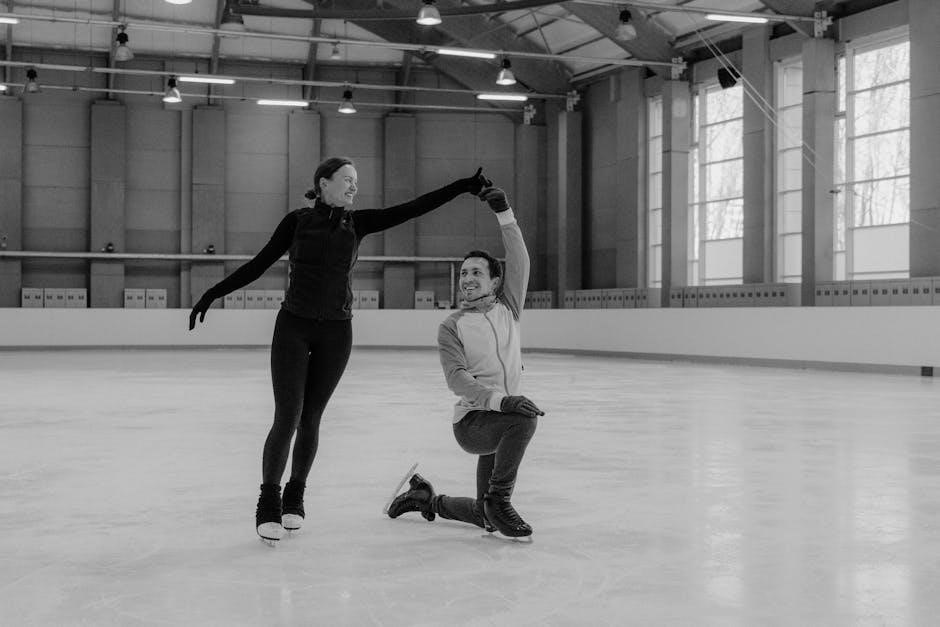
Common Challenges and Solutions
While the Cawthorne-Cooksey exercises are highly effective‚ some patients may face challenges such as increased dizziness during initial stages or difficulty performing certain movements․ To address these‚ it’s important to start slowly and gradually increase intensity․ Consulting with a healthcare professional can provide personalized adjustments and ensure safety․ Additionally‚ incorporating relaxation techniques can help manage discomfort․ For those struggling with motivation‚ setting achievable goals and tracking progress can enhance adherence․ Lastly‚ ensuring proper posture and focusing on breathing during exercises can improve overall effectiveness and reduce challenges․ Persistence and professional guidance are key to overcoming obstacles and maximizing the benefits of the program․ By addressing these challenges proactively‚ individuals can successfully navigate the exercises and achieve better vestibular health․ Regular practice and patience are essential for long-term success․
Comparisons with Other Treatments
The Cawthorne-Cooksey exercises differ from other vestibular treatments like Canalith Repositioning Maneuvers‚ which are procedural and performed by professionals․ Unlike vestibular rehabilitation therapy (VRT)‚ which is often more intensive and tailored‚ Cawthorne-Cooksey exercises are self-managed and home-based․ They focus on habituation and balance retraining‚ offering a less invasive approach․ While medications may alleviate symptoms‚ they don’t address the root cause‚ making them supplementary rather than a primary solution․ Lifestyle modifications are complementary but insufficient alone․ Cawthorne-Cooksey exercises are unique in their accessibility and focus on patient empowerment․ They may not be as immediately effective as CRP for specific conditions or as comprehensive as VRT but provide a valuable‚ self-directed option for managing vestibular issues‚ emphasizing long-term habituation and balance improvement․
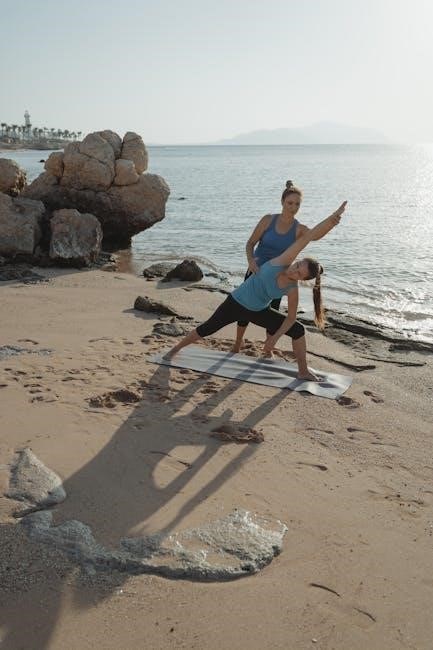
Role in Vestibular Rehabilitation
The Cawthorne-Cooksey exercises play a pivotal role in vestibular rehabilitation by targeting the brain’s ability to adapt to and process balance-related signals․ These exercises are specifically designed to address vestibular disorders‚ such as vertigo and dizziness‚ by promoting habituation and compensation mechanisms․ Unlike other treatments‚ they focus on gradual‚ self-managed progress‚ making them an accessible and effective home-based option․ The exercises strengthen the connection between the brain‚ eyes‚ and inner ear‚ enhancing overall balance and reducing symptoms․ They are often used alongside other therapies but stand out for their emphasis on patient empowerment and long-term recovery․ By training the brain to tolerate challenging movements and environments‚ the Cawthorne-Cooksey exercises provide a foundation for lasting improvement in vestibular function and daily activities․
Case Studies and Testimonials
Case studies highlight the effectiveness of Cawthorne-Cooksey exercises in improving vestibular function․ Many patients reported significant reductions in dizziness and enhanced balance after consistent practice․ One study revealed that participants experienced improved quality of life and reduced symptoms‚ showcasing the exercises’ real-world benefits․ Testimonials often emphasize how the structured approach of the exercises helped individuals regain confidence in daily activities․ For instance‚ a patient with chronic vertigo noted a dramatic reduction in episodes after following the program․ These testimonials underscore the exercises’ role in empowering individuals to manage and overcome vestibular challenges effectively․
The Cawthorne-Cooksey exercises have proven to be a valuable tool in vestibular rehabilitation‚ offering a structured approach to reducing dizziness and improving balance; By gradually training the brain to adapt to abnormal signals‚ these exercises empower individuals to regain control over their vestibular challenges․ The exercises are easily accessible through a comprehensive PDF guide‚ making them a convenient option for home-based rehabilitation․ Testimonials and case studies highlight the positive impact of consistent practice‚ with many patients experiencing significant improvements in their quality of life․ While individual results may vary‚ the Cawthorne-Cooksey exercises remain a cornerstone in managing vestibular disorders‚ emphasizing the importance of patience and dedication in achieving long-term relief․

References
The Cawthorne-Cooksey exercises are widely referenced in vestibular rehabilitation literature․ Key sources include works by Gans (2002) and Herdman & Clendaniel (2014)‚ which detail their application in treating balance disorders․ The exercises are also discussed in vestibular rehabilitation guidelines and patient resources․ Additionally‚ the Cawthorne-Cooksey exercises PDF is cited in numerous clinical studies and patient guides‚ emphasizing their effectiveness in reducing dizziness and improving balance․ These references highlight the exercises’ role in vestibular rehabilitation and their accessibility for home-based use․ For further reading‚ resources like “Vestibular Rehabilitation: A Clinical Handbook” and online vestibular rehabilitation guides provide in-depth insights into their implementation and benefits․

Frequently Asked Questions
Q: What are the Cawthorne-Cooksey exercises?
A: They are a set of habituation exercises designed to help individuals with vestibular disorders reduce dizziness and improve balance․
Q: What is included in the Cawthorne-Cooksey exercises PDF?
A: The PDF provides a detailed guide with structured exercises‚ instructions‚ and progression plans for self-management of vestibular symptoms․
Q: How do the exercises work?
A: They work by training the brain to adapt to abnormal balance signals through gradual and repetitive movements․
Q: Can I do these exercises at home?
A: Yes‚ the exercises are designed for home use‚ but consistency and adherence to the program are crucial for effectiveness․
Q: Are the exercises scientifically proven?
A: Studies and clinical guidelines support their effectiveness in reducing dizziness and improving balance in patients with vestibular issues․
Q: Should I consult a healthcare professional before starting?
A: Yes‚ it is recommended to consult a healthcare provider or vestibular therapist to ensure the exercises are tailored to your specific needs․
Q: Where can I find the Cawthorne-Cooksey exercises PDF?
A: It is often provided by healthcare professionals or can be accessed through reputable vestibular rehabilitation resources online․
Future Directions
The future of Cawthorne-Cooksey exercises lies in enhancing accessibility and integrating technology․ Developing mobile apps with guided videos and personalized plans could make the exercises more interactive․ Virtual reality might offer immersive environments for vestibular training‚ aiding patients in controlled settings․ Expanding the exercises to address a broader range of vestibular disorders or preventive use for at-risk individuals is another potential direction․ Further clinical trials could validate long-term benefits and explore new applications․ Enhancing the PDF guides with detailed instructions and visual aids could improve user understanding and engagement․ By embracing these innovations‚ the Cawthorne-Cooksey exercises can evolve to meet diverse patient needs and advance vestibular rehabilitation effectively․